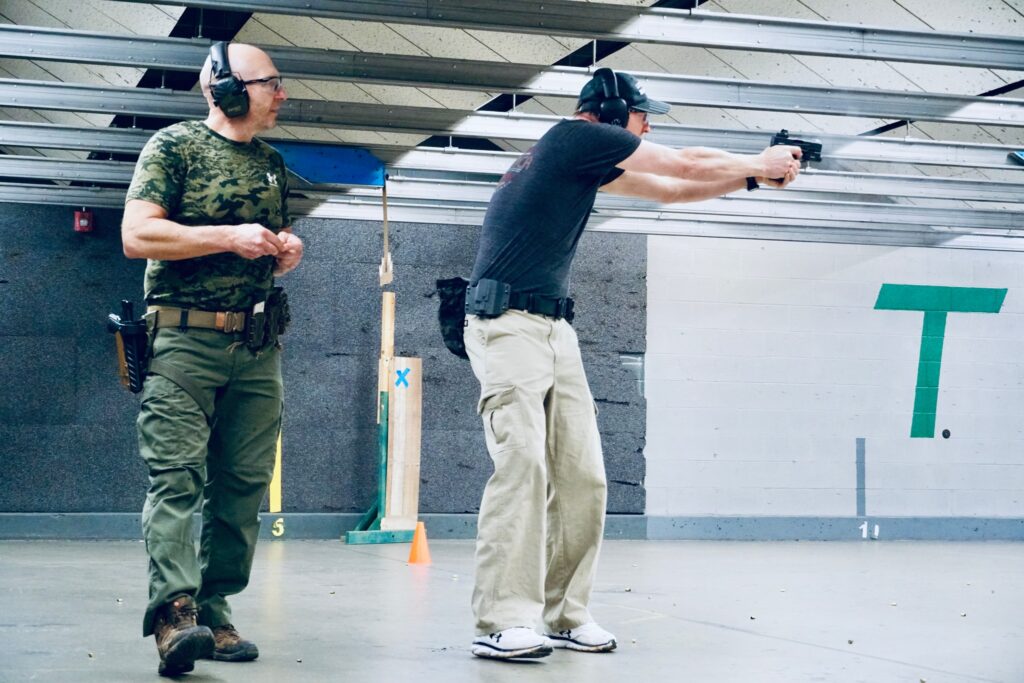The field of gunsmithing continues to develop as technology, customer expectations, and manufacturing methods evolve. As the industry grows, it faces the challenge of bridging generational knowledge gaps between experienced artisans and new professionals entering the trade. Sonoran Desert Institute reviews the importance of preserving traditional skills while integrating modern techniques, recognizing that the future of gunsmithing depends on collaboration across generations. As an institution accredited by the Distance Education Accrediting Commission (DEAC), SDI supports educational pathways that honor craftsmanship and foster innovation in equal measure.
Veteran gunsmiths carry decades of hands-on experience that includes time-tested methods, deep mechanical knowledge and a nuanced understanding of firearm function. At the same time, newer gunsmiths often bring technical training, familiarity with digital tools and exposure to modern manufacturing processes. Bringing these two groups together strengthens the industry by blending expertise from both perspectives.
The Value of Traditional Artistry
Many seasoned gunsmiths have learned their craft through years of hands-on work, mastering skills passed down through apprenticeship or personal experience. These professionals excel in areas such as hand-fitting parts, diagnosing subtle malfunctions and performing complex restorations on vintage firearms.
Traditional expertise emphasizes attention to detail, patience and a deep understanding of how mechanical components interact. These skills remain critical in gunsmithing, where even minor imperfections can impact firearm performance and safety. Preserving this knowledge ensures that the art of gunsmithing maintains its integrity as new generations join the field.
Emerging Technologies in Gunsmithing
As the industry advances, newer gunsmiths often enter the field with exposure to modern technology that enhances precision and efficiency. Computer-Aided Design (CAD), CNC machining, 3D printing and advanced coatings offer opportunities to improve manufacturing processes and expand customization options.
These tools allow gunsmiths to produce highly accurate components, replicate parts for rare firearms and explore new materials that improve performance and durability. Modern software also assists with ballistics calculations, blueprinting and design visualization, providing valuable resources for both custom work and repairs.
The Risk of Lost Knowledge
While technological advances bring new capabilities, there is a risk that some traditional skills may be lost if not actively preserved. Techniques such as manual machining, checkering, stock shaping and engraving require hands-on practice to master fully.
Without intentional knowledge transfer, these techniques may become less common, leaving gaps in the industry’s skill set. Balancing modern efficiency with respect for traditional artistry ensures that the full range of gunsmithing expertise remains available to serve diverse customer needs.
Mentorship as a Bridge Between Generations
Mentorship plays a vital role in bridging the knowledge gap between experienced and emerging gunsmiths. Although Sonoran Desert Institute does not offer a formal mentorship program, mentorship remains a valuable tradition across the broader industry. Informal relationships between seasoned professionals and newer technicians help preserve essential skills, foster learning, and strengthen the gunsmithing community.
Veteran gunsmiths contribute valuable knowledge in areas such as troubleshooting, hand-fitting, and traditional problem-solving, while newer professionals often bring fresh perspectives, including digital tools, data analysis, and modern fabrication methods. These informal mentorships, whether arranged independently or through industry networks, help strengthen individual skill sets and support continuous learning across the profession.
The Role of Continuing Education
Formal education provides a foundation for understanding both traditional and modern gunsmithing techniques. Institutions emphasize comprehensive training that includes firearm function, safety, repair methods and technology integration. Through structured coursework, students gain exposure to both established practices and emerging tools.
Continuing education allows working gunsmiths to stay informed about industry developments. As technology progresses, ongoing training ensures that professionals remain current in areas such as metallurgy, machining processes, coatings and compliance regulations. This commitment to learning supports long-term career growth and industry advancement.
Collaborative Learning Environments
Creating collaborative spaces where experienced gunsmiths and newer professionals work together promotes mutual respect and shared learning. Apprenticeships, industry workshops and professional associations serve as valuable platforms for exchanging ideas and building relationships.
In these environments, experienced gunsmiths pass down techniques that require years to master while newer professionals share insights into emerging tools and materials. Open dialogue and collaboration encourage innovation while preserving the industry’s rich history.

Balancing Efficiency with Skilled Precision
Modern tools improve efficiency, but artisanship remains essential in custom work, fine-tuning and restoration projects. Gunsmiths must balance the speed and precision of automated equipment with the careful adjustments that only skilled hands can achieve.
For example, CNC machines can produce parts to exact specifications, but final fitting often requires manual adjustments to ensure proper function and safety. Understanding when to rely on technology and when to apply hands-on expertise is a skill that develops through experience and mentorship.
Addressing Customer Expectations
Today’s firearms customers often seek a blend of tradition and innovation. Some request classic restorations that honor a firearm’s history, while others desire modern modifications that enhance performance and aesthetics. Gunsmiths who possess both traditional and modern skills can meet these diverse demands, offering services that appeal to a wide range of clients.
By understanding customer preferences and staying current with market trends, gunsmiths position themselves to serve both collectors and enthusiasts seeking advanced customization. This versatility strengthens business growth and creates lasting customer relationships.
The Importance of Documentation and Standardization
Documenting traditional gunsmithing techniques helps preserve them for future generations. Detailed records, instructional manuals and video tutorials allow emerging gunsmiths to study and replicate methods that may otherwise fade from practice.
Standardizing training materials ensures consistency in skill development, while providing a reference for troubleshooting and problem-solving. Professional organizations and educational institutions play a critical role in compiling and distributing these resources to the broader gunsmithing community.
The Role of Professional Education
Structured training programs help prepare aspiring gunsmiths to navigate both the mechanical and technological aspects of the profession. Comprehensive firearms technology curricula often include instruction in repair, customization, safety and business operations, providing students with a well-rounded foundation.
Professional education supports continuous learning throughout a gunsmith’s career. Through expert instruction and specialized coursework, students gain the confidence to apply both traditional techniques and modern tools to real-world challenges.
Bridging generational knowledge gaps strengthens the gunsmithing profession by honoring its history, while embracing innovation. As experienced artisans share their wisdom and new professionals bring fresh perspectives, the industry continues to thrive.
Through mentorship, continuing education and collaboration, gunsmiths preserve the full spectrum of skills needed to meet diverse customer needs. Educational institutions that blend time-honored methods with evolving technology play a key role in ensuring the next generation is equipped to carry the craft forward with professionalism and respect for the art of firearms repair and customization.





:max_bytes(150000):strip_icc()/GettyImages-1084171152-8445a490b5894f0a9bb588dbfc2ac22d.jpg)



